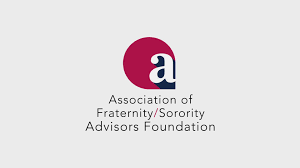Association of Fraternity/Sorority Advisors
Prepares for growth with new governance strategies.
Excellence begins at the top. To prepare their organization for growth, the Association of Fraternity and Sorority Advisors wanted to make a careful review of their governance policies and procedures. The goal was to be sure the organization was forward-looking in its approach and ready to address the challenges of expansion in the digital era.
Overview
AFA’s mission is to elevate the standard for effective professional practice in working with sororities and fraternities in higher education. The organization strives to be the premier community of professional practice for those committed to enhancing the fraternity/sorority experience and is the leading voice in creating a fraternity/sorority profession of ever-increasing skill, value, and inclusion.
AFA was founded in 1976, as a product of a prior meeting commemorating the bicentennial of the fraternity/sorority movement. The primary purpose was to foster collaboration among the multiple populations of professionals and volunteers who were committed to elevating the work of the fraternity/sorority advisor. That spirit of cooperation and collaboration is still at the heart of AFA and has served as the foundation for its continued growth.

The challenge
.orgSource senior consultant, Liz Lucas, and Sharon Rice, .orgSource, Managing Director Business Strategy, were eager to help AFA develop a nimbler governance structure.
“It was exciting to see this organization with a long history seeking to expand their audience and their reach,” Lucas says. “AFA sees the potential in welcoming new member groups. They’ve already identified leaders who have related roles in higher education as potential constituents. Our approach was energized by their foresight.”
AFA’s priority was to explore strategies that would strengthen board governance and help the organization meet its mission more effectively.
“The group was noticing less member enthusiasm for taking leadership roles such as a president, secretary, or treasurer,” Lucas noted. “They wanted to ensure the qualifications weren’t limiting the pool of applicants. They also hoped to organize membership categories in ways that would better support developing future leaders in the organization.”
AFA knew they could anticipate wide-ranging changes. They were prepared for recommendations impacting bylaws and policy, including how to:
- Identify and recruit strong, committed leaders.
- Develop eligibility requirements reflecting the Association’s unique characteristics.
- Improve the selection of officers.
- Restructure membership categories to complement governance.
The Solution
The project began with knowledge-gathering to help consultants understand the organization’s culture and board governance system. Consultants interviewed key stakeholders and reviewed foundational documents, such as bylaws and policy manuals. Demographic and other significant data provided an overview of AFA’s constituent landscape.
Based on that information, the .orgSource team was able to identify various themes surrounding governance and board development and to spot gaps in the current processes. “For example,” Lucas observed, “we provided guidance on how to manage the delicate dynamic between the nominating committee and the board. It was important to develop strategies supporting areas where their needs intersected while preserving each group’s independence.”
The consultant’s final report outlined 20 recommendations designed to enhance board stability, competence, and growth. They included proposals for:
- Aligning the governance structure to support the organization’s strategic direction.
- Addressing gaps between the by-laws and the desired outcomes.
- Increasing inclusivity, investment, and value.
- Managing change and assigning responsibility for implementation.
The Results
One of the benefits of being a consulting firm is the opportunity to participate in helping great organizations evolve. “AFA is smart, proactive, and creative in their approach to the market and the changing environment,” Lucas said. “They are committed to staying relevant and nimble with their governance structure. They saw the possibility for expansion and were quick to prepare the organization to take advantage of that opportunity.”

